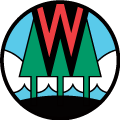Wildlife Habitat
- News
Incidental Take Notice for Dane County
The Nine Springs Valley Interceptor Project may result in the "incidental taking" of a rare moth under a permit the Wisconsin Department of Natural Resources (DNR) proposes to issue for the project. Incidental take refers to the unintentional loss of individual endangered or threatened animals or plants that do not put the species' overall population at risk.
- News
Watch For Salamanders, Snakes, Frogs And Lizards On The Road
New efforts are underway to help Wisconsin's "creepy crawlies" - native frogs, salamanders, lizards and snakes - from perishing under the wheels of cars and trucks.
- News
Snapshot Wisconsin’s Data Dashboard Now Open To The Public
Snapshot Wisconsin, one of the Department of Natural Resources’ largest citizen science projects, opened its new data visualization tool to the public today. data dashboard is a new tool that lets the public interact with data collected from approximately 2,000 cameras spread across the state to monitor wildlife.
- News
Trumpeter Swans Fitted With GPS Collars To Reveal Migratory Habits And Habitats
The successful recovery of trumpeter swans in Wisconsin and other western Great Lakes states is spurring a new regionwide effort to better understand the migration routes and winter habitats of these birds, the largest in North America and named for their resonant calls.
- News
One Million And Counting: Wisconsin Reaches New Milestone In Avian Citizen Science
Ranked second nationally in birdwatching participation and a longtime high flyer in bird monitoring, conservation and citizen science, Wisconsin has added another feather to its cap. The state’s bird lovers have submitted more than one million checklists to eBird, the popular online platform for reporting bird observations.
- News
From Survivor To Mama: Whooping Crane Endured One Of Wisconsin's Harshest Winters To Hatch A Happy Milestone
A female whooping crane that made history as the first of its kind known to survive a Wisconsin winter has once again flown into the record books.
- Webpage
Emerging Wildlife Diseases
An emerging disease is a disease that has recently appeared in a population, or one that is present in a population already but is rapidly increasing in the number of individuals affected or in its geographic range.There are many factors that can…
